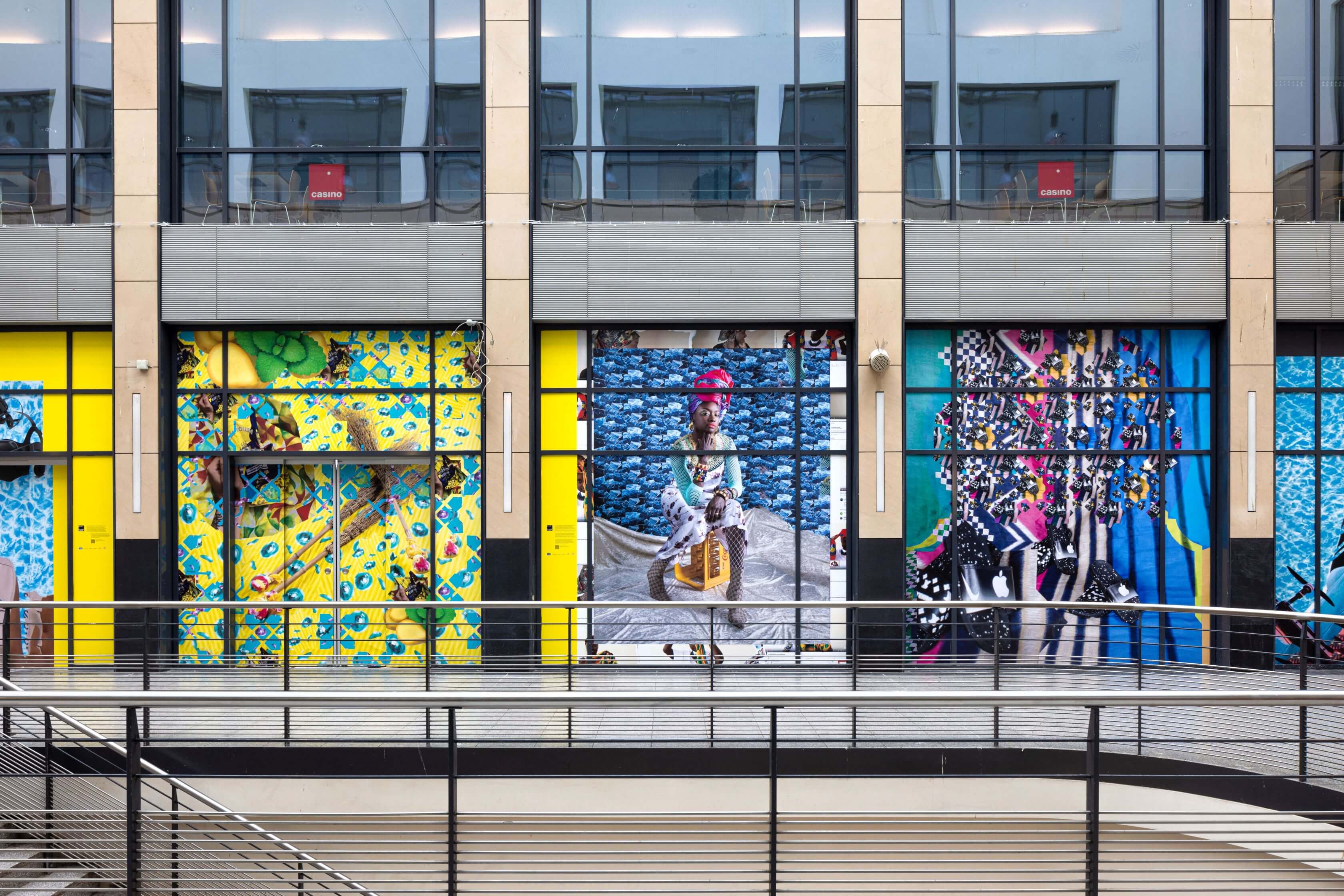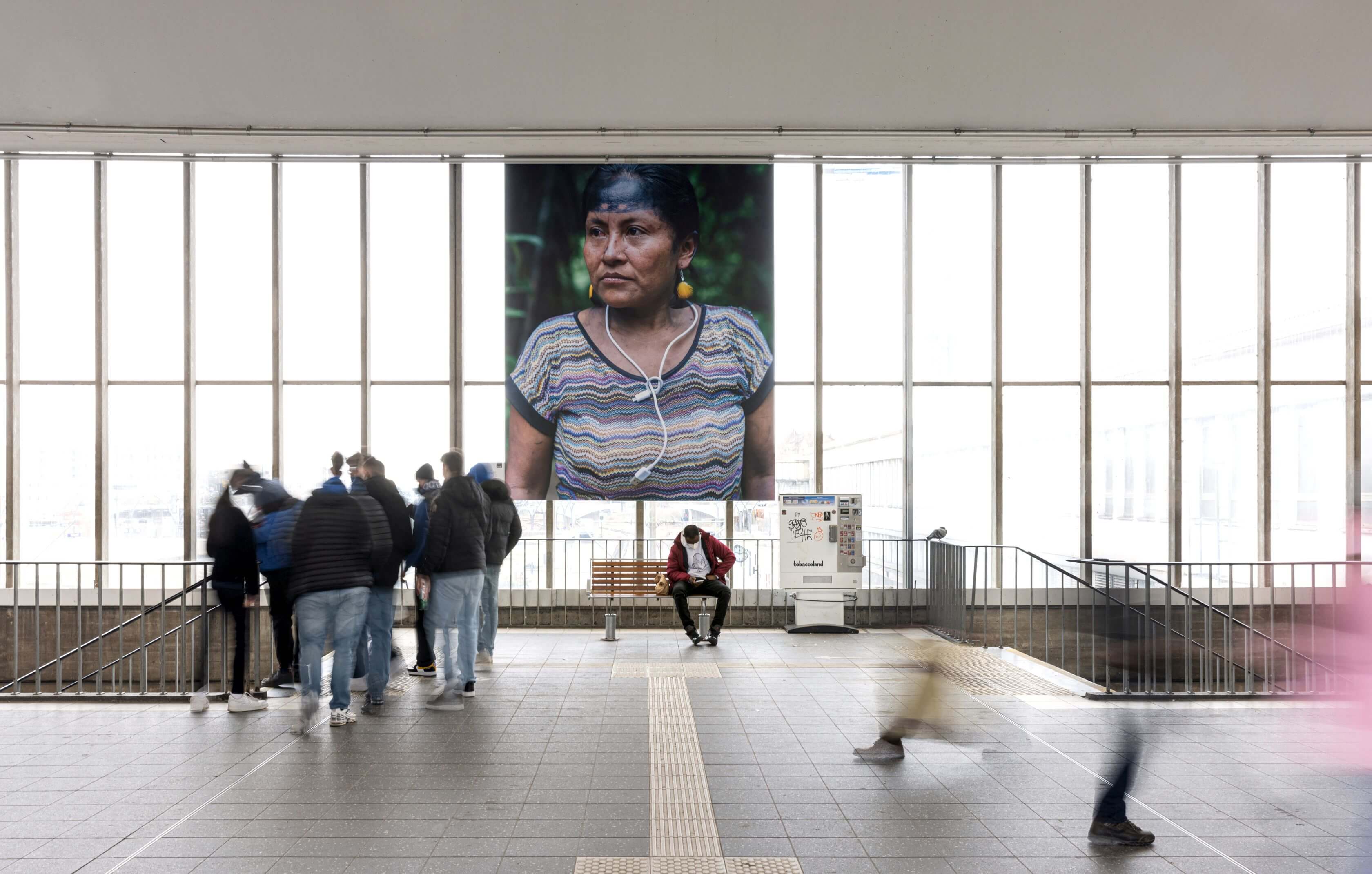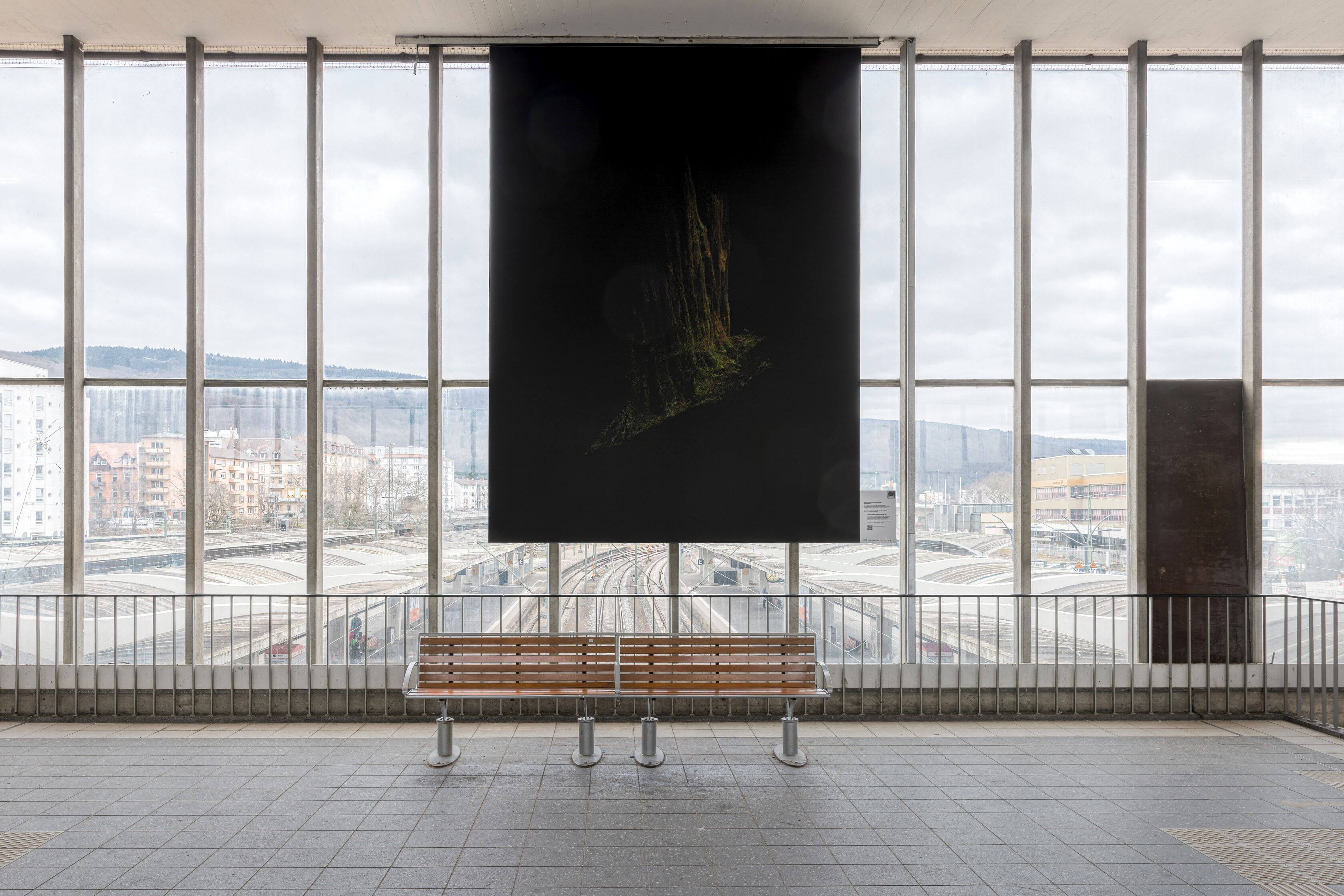Photography in the stations of Mannheim and Heidelberg
From February 18 to June 22, 2022, as part of the Biennale für aktuelle Fotografie 2022, works by three artists will be installed on a large scale at Mannheim and Heidelberg central station. In Mannheim, excerpts from the series Tools for Conviviality by Anna Ehrenstein will be presented. In Heidelberg, images from the series Secret Sarayaku by Misha Vallejo Prut and the project Footprints in the Valley by Eline Benjaminsen turn the Heidelberg train station into a temporary gallery.
Anna Ehrenstein, Tools for Conviviality, 2018-2020

Anna Ehrenstein, from the series Tools for Conviviality, 2018-2020 | Photo: © Lys Y. Seng
In the project Tools for Conviviality, artist Anna Ehrenstein explores possibilities, tools, and technologies that bring people together on a global scale. She travelled to Dakar, the capital of Senegal, and engaged in a creative exchange process with people who work in the domain of fashion and design. She had previously become aware of their work online.
Collaboration with Creatives
She collaborated over an extended period digitally as well as locally, for example at Dakar's fabric market with Mandé Mory Bah and Thibault Houssou, who run the fashion label and second-hand fashion platform Donkafele; Nyamwathi Gichau, a yoga teacher; Lydia Likibi, a handbag designer; Awa Seck, who runs a headdress label; and Saliou Ba, a translator and Airbnb host, among others. Among other things, digital collages - such as those on display at Mannheim's main train station - have emerged from this collaboration. The fashion collective Donkafele, for example, has used some of the digital collages for prints on T-shirts and bags.
Potential of the Internet
The creative exchange process between the artist and her colleagues, who have migrated to Senegal from Benin, Guinea, Gambia, the Republic of Congo and Kenya, among other places, reflects the interrelations between physical and digital spaces: for example, the potential the Internet holds for global collaboration.
Visually, what is particularly striking about the digital collages is their brightly coloured Photoshop aesthetic. The sometimes surreal scenes, such as the one with the man casually surfing through a Bitcoin rain in front of a pool background, question photography as a supposedly neutral documentation medium. With such deliberately designed visual distorted effects, Anna Ehrenstein and her colleagues want to make clear that there is no such thing as a neutral view from the outside. They encourage us to think about stereotypical depictions and their representation in the media.
The 360-degree video, which also resulted from the collaboration, leads into a similarly futuristic, surreal world.
If you play this link via the YouTube app, you can experience the view as a 360-degree video.
Call for an appreciative togetherness
The work, which is installed above the main entrance of Mannheim's main train station, summarizes the project idea of the artist and her colleagues. The inscription "The Tools for a just society. Conviviality against Leitkultur" is a call for conviviality as a 'tool' for an appreciative togetherness and an equal, mutual exchange of cultures.
Would you like to know more?
The installation is part of the Biennale für aktuelle Fotografie 2022. Under the title From Where I Stand, curator Iris Sikking has selected photographic positions from 40 international photographers and collectives that move between art, journalism and activism.
For more insights into Anna Ehrenstein's series Tools for Conviviality, visit the Biennale exhibition Collective Minds at PORT25 - Raum für Gegenwartskunst from March 19 to May 22, 2022.
Misha Vallejo Prut, Secret Sarayaku, 2021

Misha Vallejo Prut, from the series Secret Sarayaku, 2021 | Photo: © Lys Y. Seng
Here you can watch a conversation between Misha Vallejo Prut and Iris Sikking, curator of the Biennale 2022. The talk was recorded during the installation of the Biennale 2022 at Kunsthalle Mannheim (in English, with Spanish subtitles).
Since 2015, photographer Misha Vallejo Prut has been documenting life in the village of Sarayaku, which is located in the Amazon rainforest of Ecuador. The Kichwa people, who live in the village of Sarayaku, have been resisting the extraction of oil in their territory for decades, which is accompanied by environmental destruction and land expropriation. The photo series Secret Sarayaku shows the everyday life of the local people, in which nature-loving life and traditional knowledge are combined with cyberactivism. Through social media, the Kichwa people uncover their battle for the preservation of their habitat worldwide. At the same time, the locals of Sarayaku spread their ancient understanding of living in harmony with nature and connect with environmental activists around the world.
Belief in the "Living Forest"
Since the people of Sarayaku understand the rainforest, like the entire earth, as a complex organism in which everything is interdependent, the inhabitants only take as much from the rainforest as they need to survive. The people of Sarayaku believe in the "Living Forest". According to this belief, the rainforest is an interconnected entity with rights, in which all elements have a spirit. To capture the richness of this worldview and the philosophy of the people of Sarayaku, Misha Vallejo Prut has also recorded video and audio material, which he has put on an interactive website.
Here you can access the Instagram accounts of everydaysarayaku and mishavallejo.
Would you like to know more?
The installation is part of the Biennale für aktuelle Fotografie 2022. Under the title From Where I Stand, curator Iris Sikking has selected photographic positions from 40 international photographers and collectives that move between art, journalism and activism.
For more insights into Misha Vallejo Prut's series Secret Sarayaku, visit the Biennale exhibition Contested Landscapes at Kunsthalle Mannheim from March 19 to May 22, 2022.
Eline Benjaminsen, Footprints in the Valley, 2020-ongoing

Eline Benjaminsen, from the series Footprints in the Valley, 2020-ongoing | Photo: © Lys Y. Seng
In her project Footprints in the Valley, photographer Eline Benjaminsen investigates the mechanisms and interrelations of global CO2 emissions trading. Starting with a certificate about the planting of a tree, which she received for a compensation payment of an air journey, she asked herself: Who plants these trees? Under what circumstances, where, and on whose land? With what justification?
Global impact on local environment
In 2020, Benjaminsen's research took her to Kenya's Embobut Forest. For centuries the indigenous Sengwer people have lived from and with the Embobut Forest. Today, the region is the hidden scene of a conflict between local and global interests in the context of worldwide CO2 emissions trading. To achieve climate protection goals, areas such as the Embobut forest are placed under protection and used as CO2 offset areas. This means that the indigenous Sengwer population gets violently displaced and their human and land rights are massively violated.
Benjaminsen's documentary about the Embobut region was made in close collaboration with Elias Kimayio, a member of the Sengwer community and human rights activist. The series encourages critical reflection on sustainability and compensation programs between the Global South and the Global North in the context of capitalism, imperialism, and postcolonialism on multiple levels.
Would you like to know more?
The installation is part of the Biennale für aktuelle Fotografie 2022. Under the title From Where I Stand, curator Iris Sikking has selected photographic positions from 40 international photographers and collectives that move between art, journalism and activism.
For more insights into Eline Benjaminsen's series Footprints in the Valley, visit the Biennale exhibition Changing Ecosystems at the Heidelberger Kunstverein from March 19 to May 22, 2022.